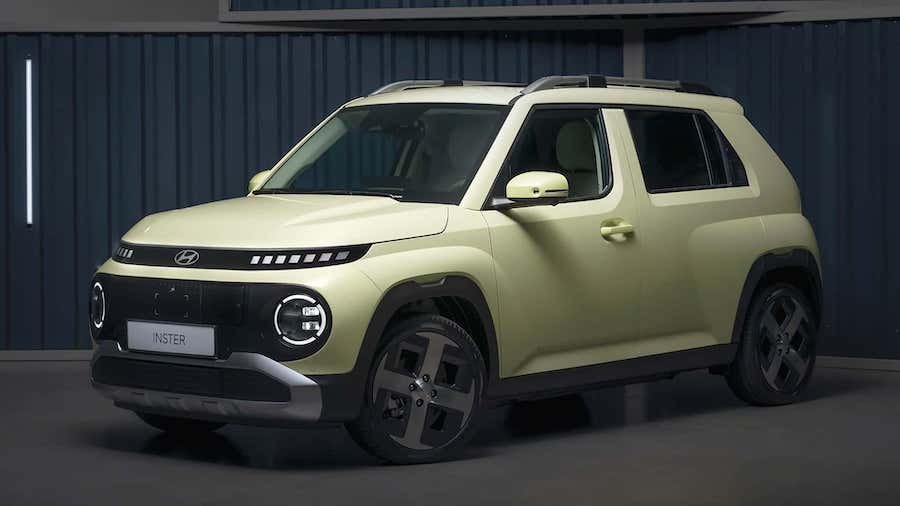Hyundai Inster is a 217-mile EV city car priced from £22,000

Hyundai is gearing up for an assault on the mainstream electric car market with the new Inster, its smallest and most affordable EV yet.
It is based on the Hyundai Casper, a diminutive city car that has so far been sold exclusively with a petrol engine in the Korean market. Its platform has been stretched by 230mm (with a 180mm of that growth in its wheelbase), improving both practicality and the available space for an underfloor battery pack.
The Inster measures 3.8m long, 1.6m wide and 1.6m tall, which positions it between the Dacia Spring and the Citroën ë-C3. Despite the car's smaller footprint, Hyundai insiders are confident that the Inster is as practical as its five-seat rivals, thanks to its efficient packaging and configurable interior. Its wheelbase almost matches that of the larger Hyundai i20, for example, and the Inster’s four seats are more versatile than those in traditional hatchbacks. Each can be folded completely flat and the two rear seats are also capable of sliding and reclining to open up more leg room or boot space as it’s needed.
The Inster will be offered with two battery and motor configurations at launch. Entry-level cars get a 96bhp front-mounted drive unit that delivers a 0-62mph sprint time of 11.7sec and a top speed of 87mph. It’s paired with a 42kWh battery pack, which is claimed to deliver a range of 186 miles between charges.
The flagship ‘long-range’ Inster is boosted to 113bhp and 49kWh, taking its range to 217 miles and its top speed to 93mph, while reducing its 0-62mph time to 10.6sec.
Both versions use the nickel-cobalt-manganese (NCM) chemistry and all Insters get a heat pump and 85kW (DC) charging capabilities as standard.
Although those specifications place the Inster roughly on a par with its class mates, Hyundai believes that it will stand out for its interior connectivity and on-board technologies. Inside, all versions get a pair of 10.25in displays (an instrument panel and an infotainment touchscreen), and you can use your smartphone as a ‘key’ to unlock and start the car.
The Inster also gets Hyundai’s full suite of driver assistance technologies, including a 360deg parking camera and adaptive cruise control. Additionally, it receives the brand’s novel blindspot monitoring system, which projects a camera image of your rear quarter view onto the instrument panel as you indicate.
Deliveries of the Inster will start by spring next year and prices are set to start at around £22,000. Specifications for the UK market have yet to be finalised, but Autocar understands it is possible that only the longer-range car will be offered here.
“We believe we will start electrification not only for the early adopters but for the mass market,” said Paolo Gnerro, product planning manager for Hyundai Motor Europe. Gnerro explained that the company is targeting two new types of customers with the Inster: “very young”, potentially buying their first new cars; and “empty-nesters – families with kids already [moved out of] home, mainly in their 50s” – who want a second car for running errands.
He added that he believes the Inster will operate outside the traditional size-bound segments, pointing to changing customer behaviours with EVs. Gnerro said: “They were not saying this is a 3.8m car; it’s A-segment. They were segmenting the cars depending on the range, no matter the size of the car. For them, a 350km [217-mile] range car is comparable to another 350km car, no matter what the size is.”
